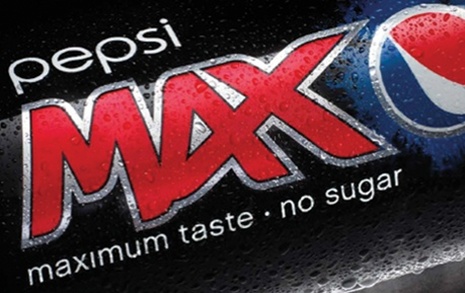What’s your chief marketing officer really thinking?
Marketing Week delves inside the minds of CMOs and finds that understanding data, finding talent and being relevant to their jobs are their key concerns.
Every piece of good news for marketing leaders is often tempered by bad news. The latest IBM Global C-suite Study, for example, shows that while chief marketing officers (CMOs) are playing an increasingly important role in devising their organisations’ overall business strategies, the majority also feel underprepared for the growth of social media and the explosion of ‘big data’.
According to the survey of more than 4,000 global business leaders, 63 per cent of chief executives involve the CMO in developing the overall business strategy – second only to the chief financial officer (72 per cent).
However, IBM also finds that “very few CMOs have implemented the key components of a digital strategy”, with just 16 per cent of marketing leaders saying that they have integrated customer touchpoints across physical and digital channels to ‘a large extent’.
The findings are a reminder that while plenty of CMOs are thriving within their organisations and delivering growth, there are many others who are struggling to establish themselves and formulate effective strategies.
This is a period of huge opportunity for CMOs, but it is also one with many challenges. To coincide with Marketing Week’s CMO 3.0 presentation at Advertising Week Europe[1] tomorrow (3 April), we caught up with CMOs across a range of brands to find out what they really think about their profession and the questions they are asking themselves about the future.
Does the business understand the role of marketing?
Brands still seem divided about the role of the CMO. Last month, for example, the Co-operative Group shocked the marketing fraternity by removing marketing director Gill Barr from the company’s executive board. The move is part of a wider management shake-up at the Co-op, which the company believes will help it communicate in a more joined up way, with Barr now reporting to chief external affairs officer Nick Folland.
The Co-op’s recent struggles are well publicised but even within strong and growing organisations the future role of the CMO is not necessarily certain. Discount grocery retailer Lidl, for example, recently announced the departure of both its head of buying and marketing Dawid Jaschok and chief executive Karl-Heinz Holland, following “unbridgeable” differences about the future direction of the company.
The split comes despite strong growth at Lidl, which saw sales rise by 16.6 per cent year-on-year for the 12 weeks to 2 March 2014, according to Kantar Worldpanel. Replacements for both positions[2] have since been confirmed, with Robin Goudsblom now heading marketing and buying.

Pernod Ricard urges junior marketers to claim ownership of their work to stand out from their peers
How can I stay relevant?
Interestingly, each CMO we interviewed selected a different issue when asked about the single biggest challenge that they face today. Britvic CMO Matthew Barwell says his biggest challenge is assembling the best possible marketing team. “Its about people,” he says. “In a world where things are changing rapidly and the role of marketing is evolving, you have to create a differentiated proposition as an employer to make sure you have the very best, most creative and inspired people working in your business.”
By contrast, Kristof Fahy, CMO of bookmaker William Hill, sees things in straightforward business terms. “I would say my biggest challenge is simply continuing to deliver growth,” he says. “There’s a definition of marketing as ‘delivering future cash flow’ and that’s the one thing that concerns me everyday.”
Pete Markey, who was recently announced as CMO of the Post Office[3], and is currently CMO of RSA Group, says keeping up with technological change is his single biggest challenge. “That falls under the bigger challenge of how the CMO stays relevant,” he adds. “Many of the established norms of what is great marketing are still true but many of them are also being challenged.”
I think you can do a lot more in-house given that you own the information
The IBM study identifies three types of CMO: traditionalists (who make up 37 per cent of marketing leaders), social strategists (33 per cent) and digital pacesetters (30 per cent). The traditionalists are categorised as those least adept at exploiting ‘big data’ and digital opportunities; social strategists are more adept but still have room for improvement, and digital pacesetters are the most effective at harnessing the latest technologies.
Despite the relatively even split between these groups, the results also show that the majority of CMOs are aware of the need to improve their skills. For example, 94 per cent of marketing leaders believe that mobile applications will play a significant role in helping them reach their goals over the next three to five years, up from 80 per cent three years ago. The same proportion of CMOs (94 per cent) plan to use advanced analytics in the future, up from 66 per cent.

William Hill’s CMO Kristof Fahy says his biggest challenge is delivering growth
I want to improve my insight expertise
Insight was a common answer among the CMOs when they were asked to name the area of marketing in which they would most like to improve their expertise. RSA’s Markey points to rapid developments in “the whole area of attribution and analytics” and notes that these have the potential to provide greater evidence of marketing return on investment within organisations.
“I understand it well but if there is one thing I would like to spend more of my time on in the coming year, it would be understanding where the emerging thinking is coming from in that space,” he says.
Barwell at Britvic[4] notes that data “is not something I naturally gravitate towards”. However, he adds that he feels compelled to improve his expertise in order to take advantage of the increasing amount of consumer insight.
“Understanding how best to utilise that data to personalise experiences for people is not something that I’ve spent much time understanding or thinking about, but I suspect it’s going to become more important,” he says.
Are my agencies best placed to help transform my business?
Figures from Accenture show that between 45 and 75 per cent of marketing activities are managed by digital agencies and marketing service providers. According to the study, high-growth companies use external agencies to a greater extent than other types of companies, “indicating that selective types of outside partners may help chart a course to improved performance”.
This is backed by research from EffectiveBrands, which suggests that brands which are outperforming the rest work with more than five agencies[5].
However, less than half of all CMOs (44 per cent) say their partners are doing a good job at helping them transform their overall marketing operation. Although one-third of CMOs say their partners have improved on execution, a similar number say they have not seen any change in their partner relationship, the Accenture figures show.
Fahy at William Hill says he grew accustomed to using a wide variety of agencies during previous roles at Yahoo and Orange, but that he is now in favour of doing more work in-house.
“At William Hill we start with an attitude of ‘if we can do it, we will’, and then look for external people to fill in the gaps,” he says. “I think you can do a lot more in-house given that you own the information and can potentially make quicker decisions.”
Drinks company Pernod Ricard, meanwhile, has brought in external expertise to improve its internal marketing capabilities. It has hired troubleshooter Antonia McCahon to implement a ‘digital acceleration programme’ across the group with a particular focus on marketing.
“It’s about ensuring that all of our teams, as well as myself, are up to speed with what is possible,” explains CMO Martin Riley. “We haven’t changed our brand strategies just because there are other things we can do, but if we believe in those strategies, the question is how can we make sure that all the possibilities that are open to us work together in an effective way.”

For Britvic’s CMO, a major focus is getting the right people on board
I want young marketers to prove themselves
Barwell at Britvic believes that “it is a brilliant time to be a marketer”. He urges young people starting out in the profession to show creativity and strategic thinking in order to drive growth within a brand.
“All of the different channels through which you can talk to and engage with consumers today didn’t exist when I was a brand manager,” he notes. “The technological revolution and the internationalisation of businesses makes it a really exciting time.”
Figures released in 2013 by High Fliers Research show that consumer goods companies such as Unilever and Procter & Gamble received 160 applications for every job last year – the highest of all business sectors. They also reveal that marketing was the most popular type of job among final-year university students, ahead of jobs in the media, consulting and teaching.
Jessica Reading, global marketing director at LateRooms.com, says that her main concern when hiring new marketers is their ability to work well within her team, rather than their qualifications. “The biggest thing is cultural fit,” she says. “They could have the best CV in the world but if they’re going to rub people up the wrong way, I don’t want them. They also need a good work ethic – I don’t know if you would call it the millennial generation, but I find far too often when we interview people today that they expect things on a plate and don’t want or feel the need to prove themselves.”
It is a brilliant time to be a marketer. The technological revolution and the internationalisation of business makes it a really exciting time
Riley at Pernod Ricard[6] urges young marketers to claim ownership for their work in order to stand out from their peers. The company hires marketers across its six global brand companies, as well as for its 80 international market companies.
“To someone starting out in a market company, I would say make sure you do something on a brand where your work can be traced back to you,” he says.
“You’re starting at a junior level but nevertheless you’re working with colleagues to make something happen and to persuade people that you are cooperative and have ideas. Then, as you move up the organisation, show how well you can work as a team member, leading projects and initiatives that can impact on your own team but also on other markets.”
How do I make the best use of data?
The Edward Snowden revelations last year, in which the CIA whistleblower revealed systemic online spying by American security agencies, thrust the question of data security and privacy into the spotlight and raised suspicions about brands that harvest large amounts of personal data. As new technology results in the proliferation of ‘big data’, CMOs are under pressure to reassure consumers and retain their trust by shepherding their brands’ privacy policies.
Fahy at William Hill claims that his brand processes more transactions per day than ecommerce giant Amazon and that as a result, it already has extremely tight data security procedures in place. He says his focus is on exploiting the opportunities of big data in order to better serve its customers.
“Am I happy where we are with data? Yes, in the sense that we’ve got loads of it and we use it every day, but no in that I’m sure there are loads more things we could do with it,” says Fahy. “But I’m looking forward to that challenge, rather than worrying about it.”
A study last month by dnx and Circle Research found that 43 per cent of marketing professionals feel they are already using big data, with a further 40 per cent who expect to use it within the next three years. It suggested that big data – defined as “the unprecedented multiple streams of customer data available to the connected enterprise via digital platforms” — is helping CMOs to directly influence the strategic direction of their company.
Skills gap
However, a Deloitte report out this week shows that 32 per cent of CMOs have a need for data and analytics experts in their teams - and that getting more data is key. Sixty-one per cent say data acquisition is their top internal marketing priority.
The relationship between CMOs and chief information officers has come under scrutiny as marketing and IT have become more aligned. Markey at the Post Office argues that both sides can combine effectively if the overall business goals are clearly aligned across departments.
To keep up with the changing role of the marketing function, CMOs have to continually develop their technical knowledge, he suggests. Indeed, some brands are uniting the two roles, with Holiday Extras creating a ‘chief marketing and technology officer’ title[7], for example.
“The marketing team of the future could be one that’s far more analytically driven than before,” claims Markey. “Insight and big data is going to be critical, so whereas analytics might currently make up 20 per cent of your marketing team, that could shift to at least 50 per cent in the next few years.”
Marketing Week presents CMO 3.0 at Advertising Week Europe, with Britvic’s Matthew Barwell, William Hill’s Kristof Fahy, Pernod Ricard’s Martin Riley and RSA’s Peter Markey on Thursday 3 April at 2pm. www.advertisingweek.eu[8]
My biggest failure - chief marketers on the most difficult lessons learnt
Not getting enough insight at the AA
Pete Markey, CMO at RSA Group, believes that the troubled launch of a loyalty scheme for golf clubs during one of his previous roles at the AA is the biggest mistake of his career. The project foundered because of the company’s failure to appreciate the diverse characteristics of different clubs.
“I walked into that [project] very naively and didn’t ask enough soul-searching questions,” recalls Markey. “I didn’t challenge the objectives we were being set and how we were going to achieve them. There was a fundamental lack of insight in the business about the scale of that challenge.”
Markey argues that a lack of insight is a common cause of failure in marketing campaigns, as well as a lack of integration across different channels.
“Some brands base every element of their success on trying to get good creative out the door rather than whether they have a clear strategy or purpose behind their brand,” he adds.
Failing to challenge BlackBerry’s strategy
Kristof Fahy, CMO at William Hill, believes the biggest mistake of his career was his failure to challenge the company board at BlackBerry over its impending decline in the smartphone market when he worked there as brand director EMEA between 2006 and 2007. “I could have pushed harder while I was there in order to get them to see what was coming,” he says.
“At the time, there was a potential sense of complacency at BlackBerry and it was very difficult to fight that. I took it on as much as I could but I wonder if I could have gone further.”
Missing the digital agenda
Matthew Barwell, CMO of drinks group Britvic, says that the biggest mistake of his career was a failure to push a digital agenda more forcefully at Diageo, where he worked for 15 years before joining Britvic last December.
“I don’t think that I fully appreciated just how difficult it would be to transform an organisation to be brilliant in the digital world,” he says. “We have all been through a journey in understanding how to use digital, social and mobile to push brands ahead brands in the modern age and we are all still learning.”
Barwell says that failure is not necessarily a bad thing for brands if it involves experimentation and innovation. “If you’re pushing the boundaries, then you have to accept that on occasion you will fail,” he notes.
Three things chief executives want from CMOs
1. Grow the business
“What I want a CMO to do is plot a course for growth – if they are not doing that, then I am not interested. You need a brutal prioritisation about what is important.”
Martin Glenn, chief executive at United Biscuits.
2. Understand digital
“We brought someone in who could understand digital. Our brand is not about the communications but how we are over all the touchpoints.”
Ian Filby, chief executive at DFS.
3. Understand customers
“I don’t think customers want to have a conversation with us. “The fundamentals still apply – brand penetration and what drives choice. [The CMO] must make financially smart choices that are enduring.”
Martin Glenn, chief executive at United Biscuits.
Glenn and Filby were speaking at Oystercatchers’ recent event ‘The changing role of the CMO’.
The CMO by numbers
63% of chief executives involve the CMO in the overall business strategy
94% of CMOs believe mobile applications will play a significant role in their future strategy
66% of marketers believe big data will help to elevate marketing to the boardroom
20% of CMOs are using social media for customer collaboration to ‘a large extent’
65% of CMOs believe consumers’ expectations for relevant experiences are having the most long-term effect on marketing strategy
Sources: IBM, Accenture, dnx and Circle Research
References
- ^ Advertising Week Europe (www.marketingweek.co.uk)
- ^ Replacements for both positions (www.marketingweek.co.uk)
- ^ Pete Markey, who was recently announced as CMO of the Post Office (www.marketingweek.co.uk)
- ^ Britvic (www.marketingweek.co.uk)
- ^ research from EffectiveBrands, which suggests that brands which are outperforming the rest work with more than five agencies (www.marketingweek.co.uk)
- ^ Pernod Ricard (www.marketingweek.co.uk)
- ^ with Holiday Extras creating a ‘chief marketing and technology officer’ title (www.marketingweek.co.uk)
- ^ www.advertisingweek.eu (www.marketingweek.co.uk)









